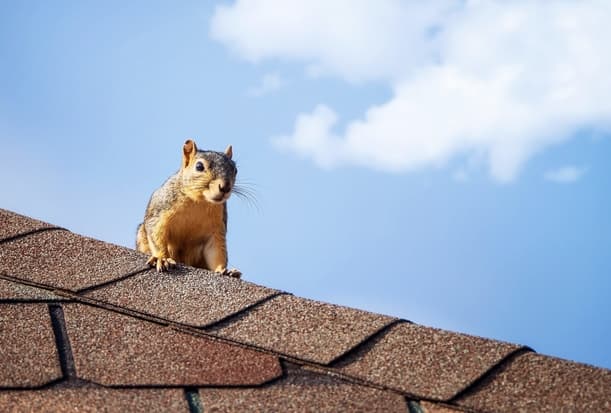Squirrels are quick and agile animals that can be very creative when it comes to finding a cozy place to nest. Attics are great places for these furry mice to hide because they are safe, warm, and not often used. For successful prevention of future infestations, it’s important to know how squirrels get into your attic if you already have one. These are some common ways squirrels get into attics:
Attic Squirrel Removal Essentials
For squirrels, one of the best ways to get in is through holes in the roof or eaves. Weather, normal wear and tear, or bad building can leave holes in things over time that squirrels can easily use. They can use their teeth and claws to get through these holes and into the attic.
Damage to the soffit:
It is well known that squirrels like to chew things, and soffits are no exception. The bottom of roof overhangs are called soffits, and they can be made of wood, plastic, or aluminium. These things can be chewed through by squirrels to make holes in your attic.
Attic Squirrel Removal Essentials
Having roof vents and ridge caps is important for keeping the attic cool, but rats can get in through them. A lot of the time, these vents and caps have holes that squirrels can easily make bigger to get in. They might even chew through the vent covers.
Attic Squirrel Removal Essentials
Attic fans and louvres are meant to help keep the attic at a comfortable temperature, but squirrels can get in through them. They could take off the fan’s cover or chew through it to get inside. They can do a lot of damage to the fan and the insulation in the attic once they get there.
Attic Squirrel Removal Essentials
Squirrels are very good at climbing, and they can get to your attic by climbing up the outside walls of your house. Openings or gaps in siding, trim, or other outdoor materials make it easy to get in. Also, squirrels may chew on these places to make holes or make them bigger.
Attic Squirrel Removal Essentials
Squirrels don’t always need to find holes in your house to get in. Sometimes they can just jump from close tree limbs or branches that hang over onto your roof. From there, they can look along your roofline for possible entry spots, like gaps or damaged shingles.
Attic Squirrel Removal Essentials
Even though chimney caps are usually there to keep squirrels out, they can still get in. If the cap on your chimney is broken or missing, squirrels can get inside and finally get into your home.
Attic Squirrel Removal Essentials
Squirrels are very quick and can get into your attic through utility lines, cables, or wires that are linked to your home. They might stick to these lines until they find a way in, like a roof vent or gap.
Attic Squirrel Removal Essentials
In some cases, squirrels will use holes in your home’s structure to get in. Rats and mice may be able to get through weak or rotting wood around the roofline, fascia, or attic entry points.
Attic Squirrel Removal Essentials
If squirrels get into your attic once, they will likely go back to the same spot to do it again. If you had a squirrel problem before and it seems to have come back, it’s likely that they’re getting in through the same hole.
It’s important to fix these common entry places if you want to avoid Squirrelgeddon and keep these persistent animals from making your attic their home. Checking the outside, roof, and attic of your home on a regular basis can help you find possible weak spots. If you think squirrels have already moved in, it’s best to get professional help to get rid of them in a safe and gentle way. You can protect your attic and keep your living space squirrel-free by being proactive and making your home stronger against squirrels getting in.
At Squirrel Control Lindsay we have many years of experience dealing with squirrels. We focus on safe and ethical wildlife animal extractions from residential and commercial properties with proven methods in accordance with federal and local rules and regulations
